If you buy through our links, we may earn an affiliate commission. This supports our mission to get more people active and outside.Learn about Outside Online's affiliate link policy
The 6 Best Base Layers for Men of 2026

We tested more than 40 men's base layer tops and bottoms in a wide range of winter conditions to find the best of the best. (Photo: Sarah Jackson)
Table of Contents
Base layers for men often don’t get the same sexy headlines, bleeding-edge technological advances, or eye-bulging price points as their outer layers counterparts. But your next-to-skin layer is just as important, arguably more so. The priciest, top-of-the-line Gore-Tex shell won’t do you much good if a soaking wet base layer is chafing your skin and chilling your bones. Picking the best base layers is incredibly nuanced and personal to your location, physical output, and body. We tested 42 new men’s base layers last winter to help you navigate this tough choice.
Best Base Layers for Men: At a Glance
- Best Overall: Stellar Merino Base Tops and Tights ($139)
- Best Top for Resort Skiing: Arc’teryx Rho LT ($120)
- Best Bottoms for Resort Skiing: Ridge Merino Inversion ($110)
- Best Top for Backcountry Touring: Rab Syncrino Baselayer ($85)
- Most Versatile Top: Flylow Hanmer Wool Baselayer ($80)
- Most Versatile Bottoms: Lé Bent Men’s Lightweight ¾ Bottom ($105)
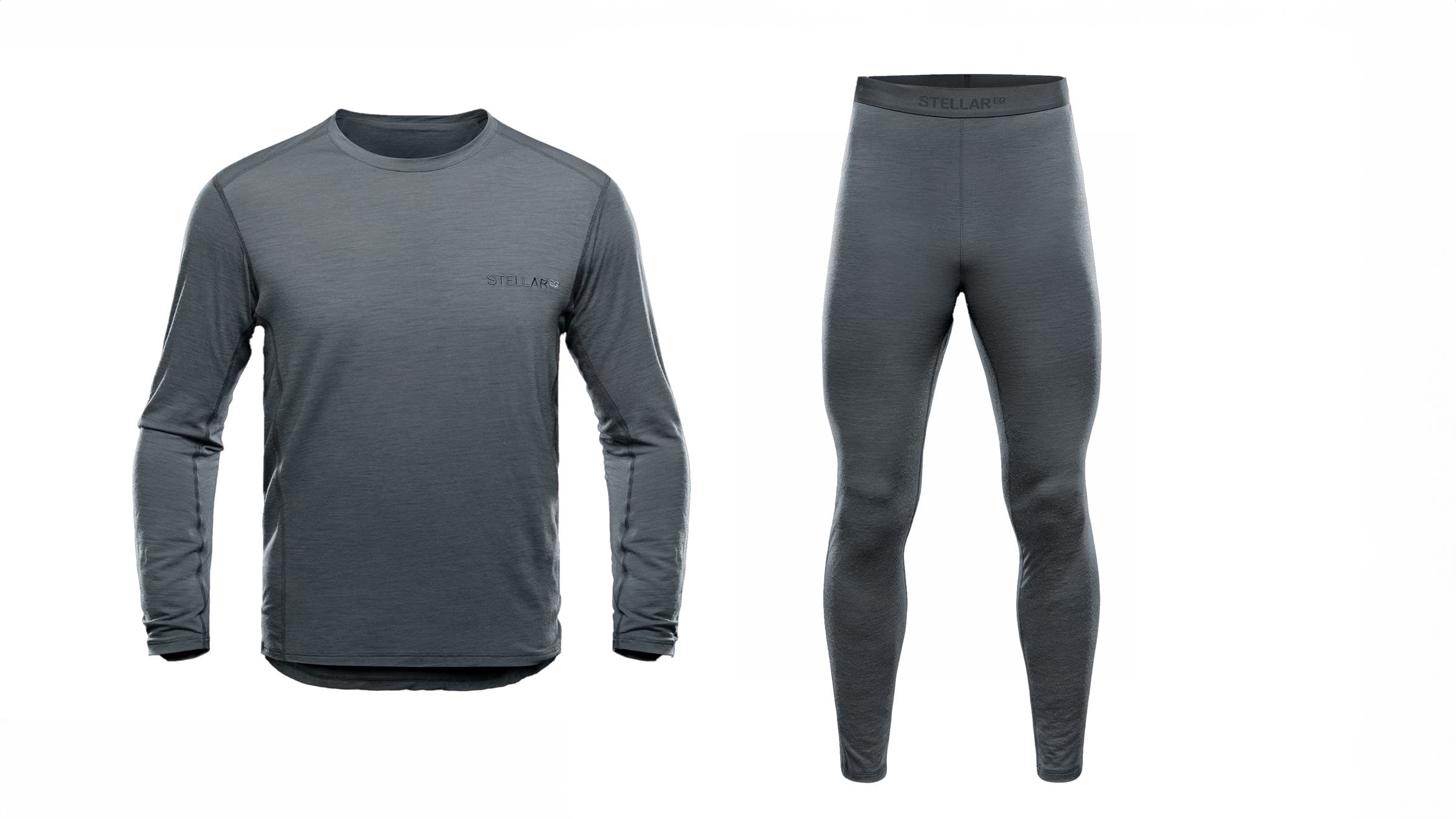
Best Overall
Stellar Men’s Merino Base Top and Tights
Sizes: S-XXL (men’s); S-XL (women’s)
Key Material: Merino wool
Pros and Cons
+ Most comfortable merino layer in test
+ Best-in-class moisture management
+ Remarkable odor mitigation
– No hood
Out of the 42 base layers we tested, the strongest pool we have ever drawn from, the Stellar Merino Base Top and Tights was the best base layering set in the widest variety of circumstances. From 15-degree full-day ski tours in Colorado’s San Juan backcountry to 45-degree high-output mountain bike rides in Durango, the layers scored best in comfort, moisture management, fit, and odor mitigation. One Durango-based tester put it simply: “Clear best in test.”
Sourced from Uruguay and produced in a family-owned factory in Portugal, the Stellar kit uses premium fine 19.5-micron merino wool fibers, which deliver both softness and stretch. The fit earned praise from our tester, who is 5’10” and 170 pounds, and extremely picky about how his base layers hug his body while he moves in the snow. “Both the top and bottoms were snug but never bunchy, with an ideal sleeve and leg length for unhindered movement,” he said.
Each layer features flatlock seams to reduce bulk, gusseted underarms for full range of motion, and an elongated back panel to block cold drafts. It moved moisture efficiently and transitioned from sweaty to completely dry in under 30 minutes. After a season’s worth of wear, odor buildup was minimal. “Still haven’t washed it!” said our tester, who cohabitates with his fiance and hasn’t heard her complain. The only knock? No hood, which would have been nice to help the top transition to a standalone spring skiing piece.
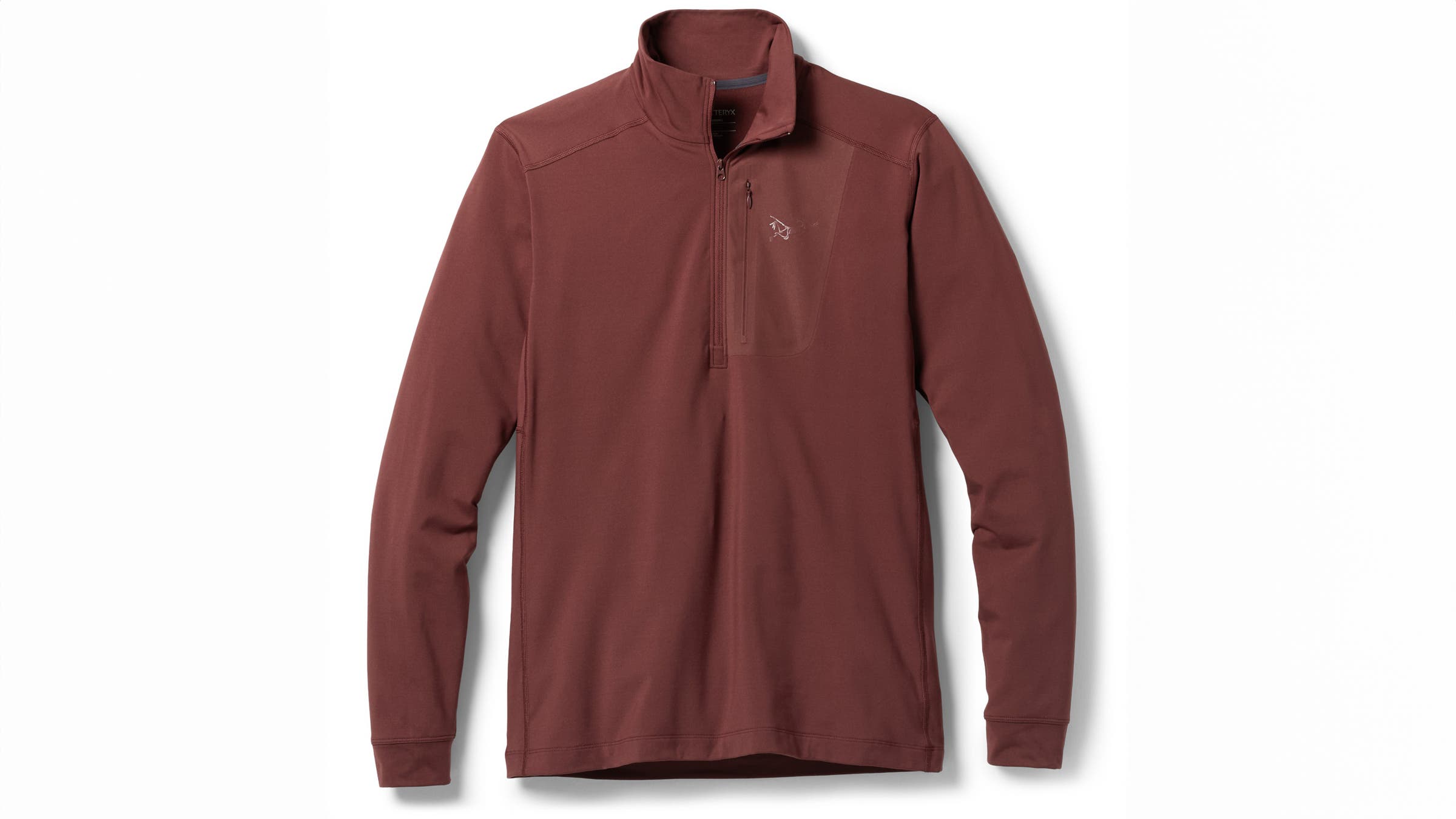
Best Top For Resort Skiing
Arc’teryx Rho LT Zip Neck Men’s
Sizes: S-XXL
Key Material: Jersey knit peached face with brushed back
Pros and Cons
+ Extremely warm
+ Doesn’t sacrifice comfort for thermal regulation
+ Flexible for the thickness of material
– Doesn’t breathe as well as higher output layers
– Packs down larger than other options
After ten days of skiing and winter travel in Japan and Oregon, one tester called the Arc’teryx Rho LT Zip Neck the best ski base layer of the test for its warmth on the lift and dynamic motion on the downhills. He also loved the next-to-skin softness and bright yellow colorway, which boosted his visibility when used as a standalone layer on cold morning runs. The Torrent stretch fleece fabric, which has a stench-fighting Polygiene treatment, delivered impressive thermal efficiency while managing odor. “No stink detected,” our tester reported after multiple sweaty outings between washes and using it as a go-to travel, running, and resort skiing piece during two weeks in Japan. The trim fit, tall collar, and slight drop hem created a sleek profile that was easy to layer with finicky technical shells, while flatlock seams, articulated patterning, and gusseted underarms allowed for a wide range of motion.
This is a warm piece and proved best for colder days. “It’d have to be really cold for me to wear this under a jacket while skinning or running,” he said, giving its sweat management a more modest ranking of 5 out of 10. Even though it became regularly soaked in sweat, when dry, the next-to-skin softness earned top marks. “It feels silky. Super comfy,” he added.
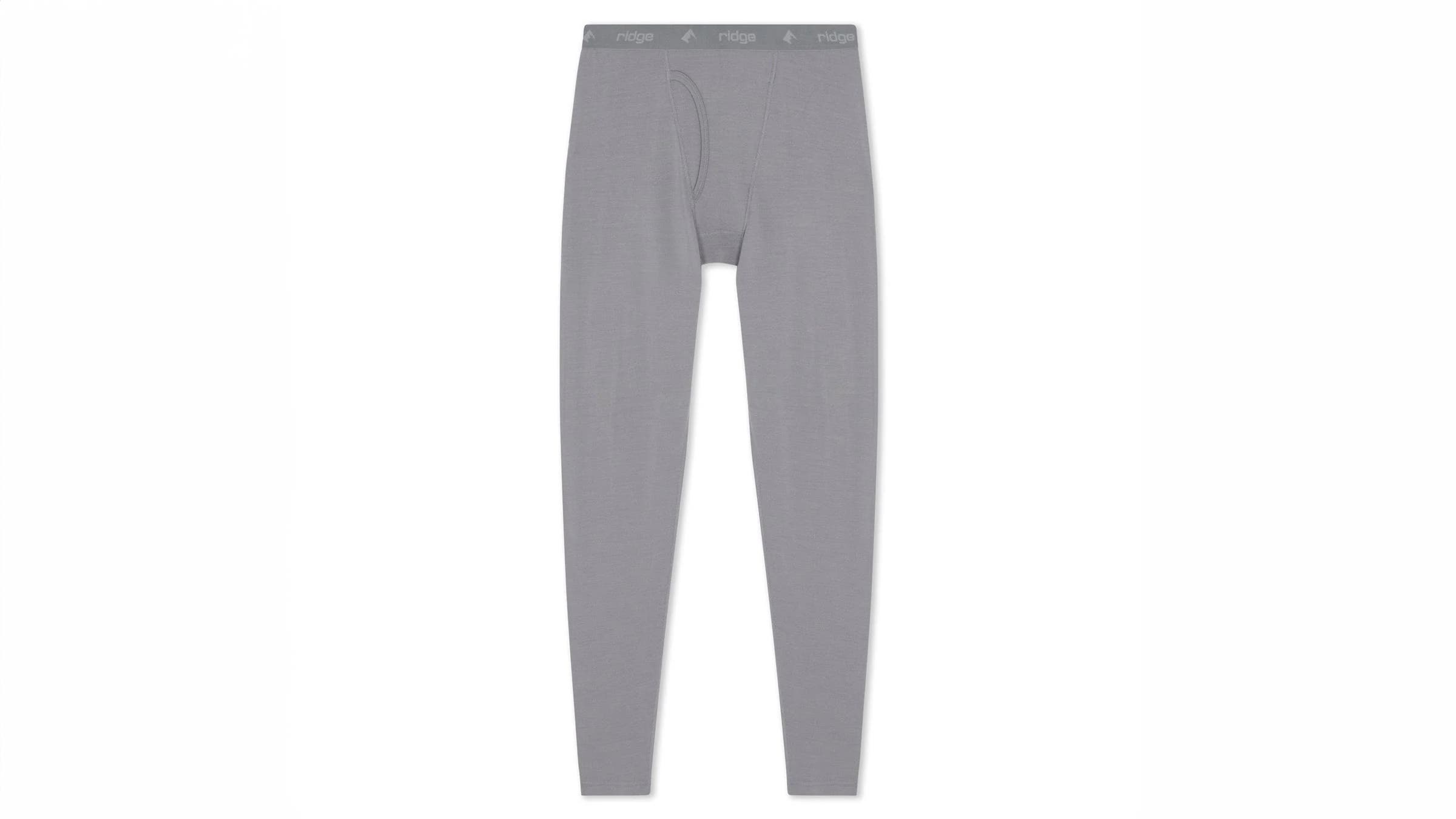
Best Bottoms For Resort Skiing
Ridge Merino Inversion Heavyweight Merino Wool Base Layer Bottoms
Sizes: S-XXL
Key Material: Merino wool
Pros and Cons
+ Extremely warm on frozen lifts
+ Dialed-in fit for movement
+ Fantastic next-to-skin feel
– Too hot for high output touring
The Inversion bottoms were toasty in the cold and luxuriously comfortable on and off the ski hill. We gave them top comfort ratings while skiing, stress-testing them in gym workouts, sledding and playing with our kids in the snow for hours, and even sleeping. The extremely high 18.5-micron count merino wool (the higher the number, the softer the wool) most certainly deserves a lot of credit for how comfortable these bottoms remained through all activities—but not all of the credit.
The slightly relaxed fit was form-fitting, not sloppy. It never bunched, instead flowing with our body movements while railing giant slalom turns at Oregon’s Mt. Ashland Ski Area. Despite the fineness of the wool fibers, these tights are considered heavyweight: The 270 grams offered plenty of warmth for an early morning snow shoveling session in the low 20s as well as four hours of icy lift spinning. We can also say that these shone in the sleep test—we felt like we were wearing a pair of fancy pajamas.
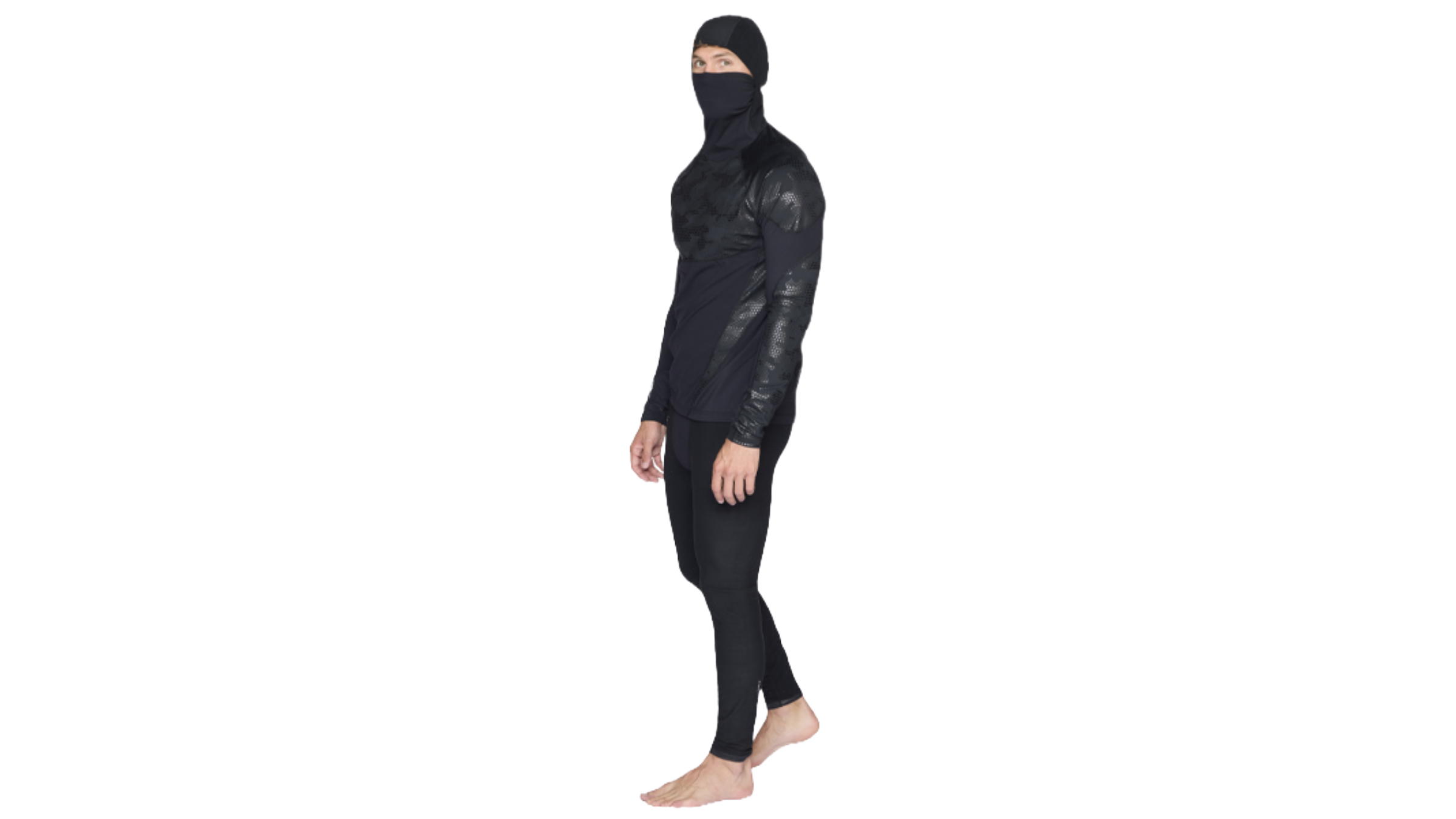
Paid Advertisement by Seirus
Men’s Heatwave™️ Performance Base Layer
When winter pushes your limits, Heatwave Performance Base Layers keep you moving. Enjoy warmth where you need it, coverage that adapts to your movement, and comfort for every adventure. Three advanced fabrics work together to lock in heat and vent where you run hot, with Dual-stage Heatwave lining amplifying and reflecting your natural warmth back to your body. The athletic fit, anti-chafing seams, and four-way stretch let you charge up a mountain, layer under a shell, or power through winter adventures.
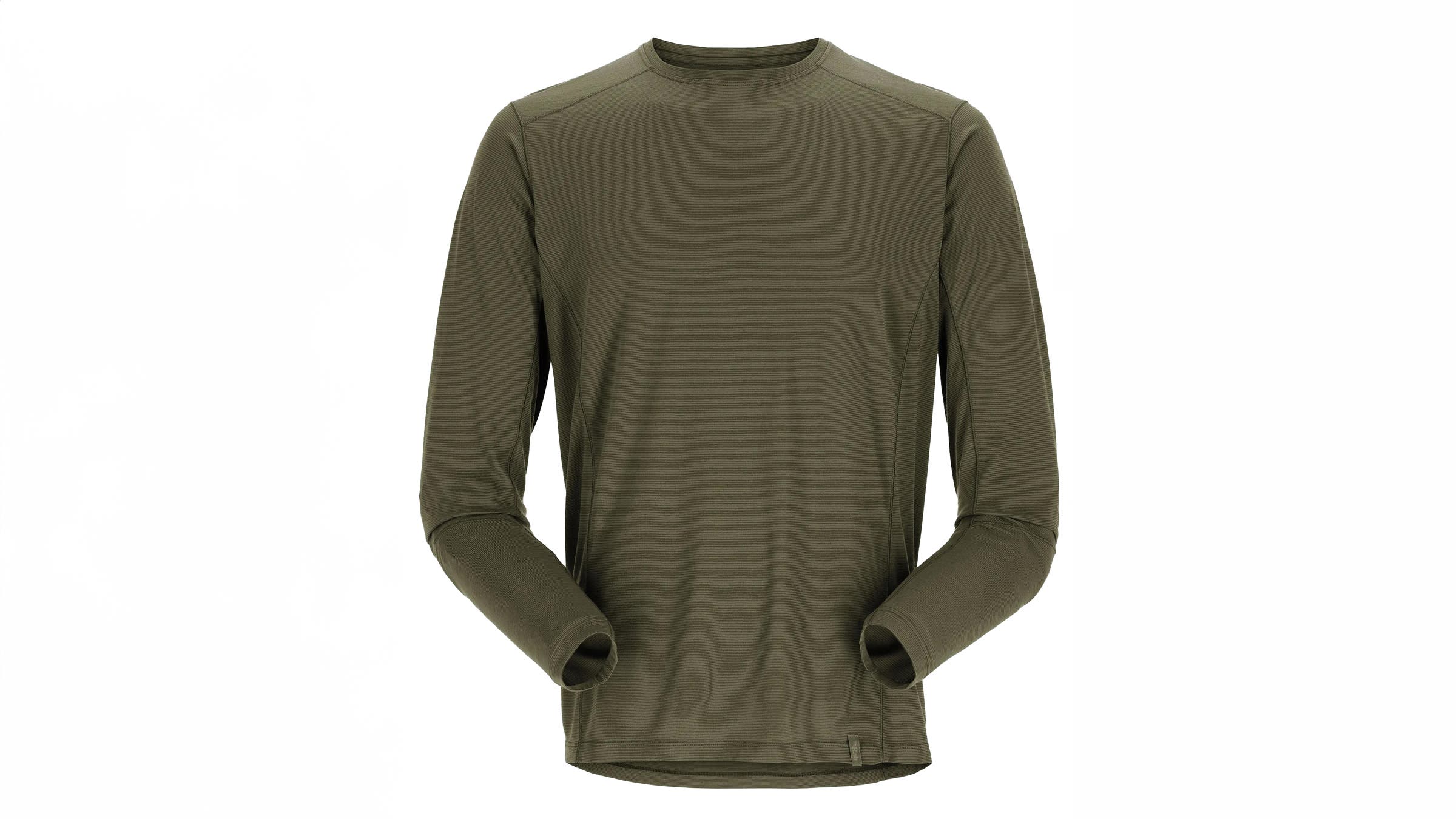
Best Base Layer Top for Backcountry Touring
Rab Men’s Syncrino Baselayer Top LS Tee
Sizes: S-XXL
Key Material: Polyester/wool blend
Pros and Cons
+ Packs down to the size of a tangerine
+ Fast drying
+ Silky next to skin
– Doesn’t work as a standalone layer in cold
Over ten days of skiing in the Japanese Alps, spinning lifts at Mt. Ashland, and ski touring at Crater Lake, the Rab Syncrino Baselayer Top LS Tee became one tester’s go-to when he knew he was going to get hot and sweat hard. Built with Rab’s lightweight Syncrino 125 fabric, it combines merino wool for insulation and moisture-wicking with polyester for strength, durability, and fast drying. We found this triad of attributes ideal for both high-output touring, hut trips, and traveling in temps 40 degrees and below. It packed down to the size of a tangerine, which one tester squeezed into his pack as a safety layer on hut trips and a two-week trip to Nozawa, Japan. He praised the next-to-skin comfort, saying it “felt like you didn’t even have it on,” and rated its mobility and sweat management highly. The single jersey construction, low-bulk seams, drop tail, and set-in sleeves made it especially comfortable under other layers. Even after sweaty skimo sessions and back-to-back cold days, it stayed fresh. “This is another go-to base layer,” our tester said. “No matter how much I sweat, it [shone] in many environments.” However, it was too lightweight to be a standalone layer during the winter months.

Most Versatile Top
Flylow M’s Hanmer Wool Baselayer Top
Sizes: S-XL
Key Material: Merino wool
Pros and Cons
+ Wide temperature range
+ Highly breathable
+ Minimal friction during exercise
– Fit is long for shorter users
The Flylow Hanmer Wool Baselayer Top was winter MVP for one tester after five big days of testing on his local ski hill, Mt. Ashland. He not only appreciated the Hanmer’s incredible versatility in the mountains but also felt like he was wearing a normal non-technical top around town thanks to its two-toned sleeves and casual style without being sloppy. “You could literally wear this every day in winter,” he said. Tested from zero to 40 degrees while skiing, running, and during three full-on nighttime skimo training sessions, the Hanmer consistently stood out for its ability to keep him warm and efficiently move his sweat at the same time—two attributes that often conflict with each other. “I would finish a skimo workout and rip off all of my other sweaty layers and keep the Hanmer top on and throw on my down jacket over it. It was amazing that it wasn’t soggy,” he said.
The Hanmer is woven from a blend of merino wool and nylon that FlyLow claims is 50 percent stronger than comparable merino fabrics. While we weren’t able to confirm that number, we can confirm that it did not experience pilling after a full winter’s worth of testing. It proved warm, breathable, sweat-wicking, and also impressively odor-resistant even after days of heavy use. “It was noticeable how odorless it was; most of my other layers would carry a little stink after the same amount of use,” he said. Flatlocked seams eliminate chafing, while a long cut makes layering easy. Thumb loops and a backpack-friendly raglan construction enhance usability during high-output movement. “The thumb holes are ingenious,” our tester said. With cozy skin feel and all-conditions reliability, the Hanmer is a layer that disappears in a good way.
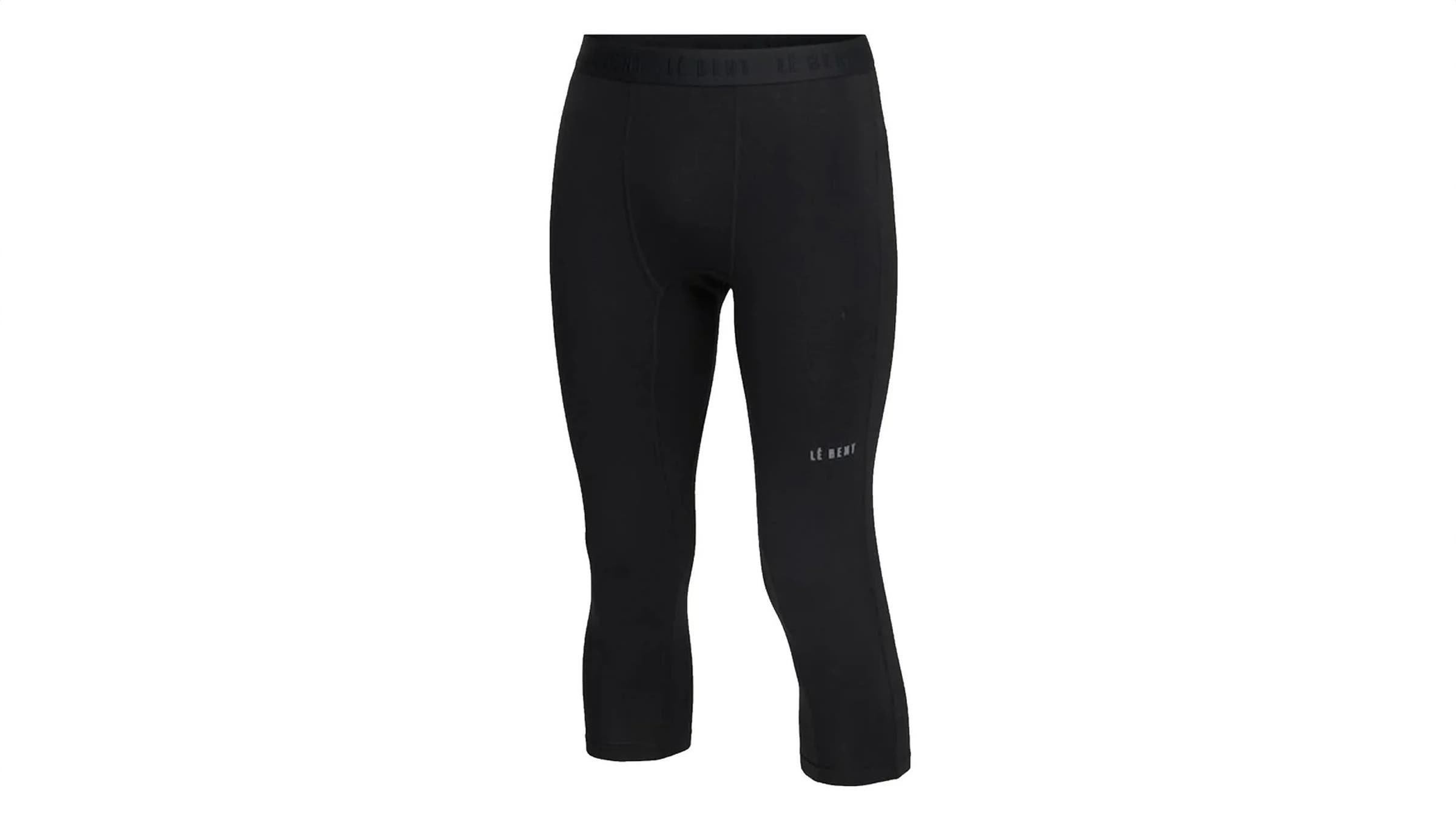
Most Versatile Bottoms
Lé Bent Men’s Lightweight ¾ Bottom
Sizes: S-XL
Key Material: Rayon from bamboo and merino wool
Pros and Cons
+ Incredible mobility
+ Fun patterns liven up the layer
+ Soft as pajamas but moves like athletic wear
– Too thin for single-digit temps
The three-quarter-length base layer has become a non-negotiable bottom base layer for skiers, including category manager Joe Jackson, thanks to how much easier it fits with socks and boots. As we extended the testing of these bottoms beyond skiing, they were a clear winner in our daily-use tests due to how amazing they felt next to skin and how they moved through myriad snow-based tasks. Their lightweight, four-way stretch material is a downright magical amalgam of rayon from bamboo, merino wool, and elastane. They were as comfy as pajamas and simultaneously killed it in mobility testing—zero reports of constriction points at testers’ hips or knees when we stress tested them with deep squats in a gym. Also shout out to Le Bent for the fashionable Shibori-style colorway.
Making as niche of gear as a three-quarter-length base layer bottom look cool is no small feat. Jackson liked the look and feel of these so much he actually wore them around home, and his wife and daughter called them his “house-capris.” They were some of the lightest weight three-quarter base layer bottoms we tested, and if you run cooler, we would suggest the Ridge Merino option from this test.
How to Choose the Best Base Layers
Everybody is different so dialing in the materials that feel the best against your skin is the most important part of the base layer buying journey. In general, the best base layers are constructed of either polyester or merino wool, with spandex, elastane, or nylon spun into the fabric to increase stretch or durability. Polyester layers are usually cheaper and quicker to dry, while merino is more expensive, dries slower (but retains heat while wet), and is more odor-resistant.
Which is better comes down to personal preference: Some love the soft hand of natural fibers, but even the most advanced, small-micron merino wool material can make someone with a wool intolerance miserable. If you can, try on any layer you want to buy. How it feels against your skin is paramount and differs per person. If something feels itchy in a dressing room, run from it, as it is only going to get more uncomfortable with prolonged use.
Once you land on a material that works for your skin, start looking into moisture management. If you sweat a ton, as many of the testers for this category do, look into lightweight synthetic base layers, as they have an excellent track record for moving moisture efficiently. If you don’t sweat much, then you can get away with thicker next-to-skin layers that will also be warmer when you’re not in motion.
In terms of design, base layers are pretty straightforward. To maximize comfort, look for upgrades like flatlock seams and raglan sleeves. These can prevent chafing, especially when wearing a pack.
Materials to Avoid
When deciding what to avoid, we would suggest starting by looking at the label. Staying away from certain materials is a great way to minimize your chances of getting a bum base layer. Cotton is an obvious material to avoid for winter specific base layers because it holds onto moisture and can become dangerously cold. Synthetics without some type of odor-mitigating technology might also not be your best bet for hut trips, winter backpacking, or high-output skinning because they can become unsavably stinky in one trip. If something is wool, check the micron number. A higher micron (17 and above) will be softer and more comfortable next to skin than a lower micron.
We also suggest looking a little deeper at the wording of wool/synthetic blends. Purpose-built blends (which intentionally place wool and synthetics in different parts of the blend) can utilize the hydrophilic and hydrophobic natures of the fabrics to its advantage. An example of this is a material that has a hydrophilic synthetic next to your skin to grab moisture with a layer of a hydrophobic wool that will move that moisture away from you. If the blend is described as “intimate,” that means that it weaves them together in a way that will deliver the worst of both worlds. An intimate blend creates a tug-of-war over that moisture that can leave you super clammy, so we recommend steering clear.
How We Test Base Layers
- Number of products: 42
- Number of testers: 6
- States tested in: 6
- Continents tested on: 2 (North America and Asia)
- Temperature range: Zero to 55 degrees Fahrenheit
Our testers ran 42 layers through the wringer in the Pacific Northwest, the Rockies, the four corners region of Colorado, the San Juans, and the countryside and Alps of Japan in their search for the best base layers for men. We proudly got these into extreme environments above 12 thousand feet and under drysuits in some of the deepest canyons in the country. We tested in temps from zero to a spicy 55 degrees. Testers were given feedback forms to fill out and score on attributes like next-to-skin comfort, fit, movement, stink mitigation, and moisture management.
Meet Our Testers
Category manager Joe Jackson has been testing gear professionally as his main gig for over a decade. While he has tested everything from whitewater kayaks to sporks, base layers remain one of his all-time favorite categories. They can be absorbed into everyday life to get the type of testing reps needed to help tease out the nuance that makes a piece of gear truly special. They also don’t take up much space in his overburdened garage.
If you suffer from FOMO, do not follow Southern Oregon-based tester Yu Kuwabara on Strava—his output is absolutely bananas. He’s the kind of athlete that will climb and ski Mt. Shasta (he has 37 summits) in the morning then teaches a mountain biking clinic that afternoon on a casual day. The local race director and father of rippers utilized the hundreds upon hundreds of multi-sport miles and tens of thousands of vertical feet he navigated around Southern Oregon as well as a trip to Japan to test the dickens out of these layers.
Durango, Colorado-based tester Ryan Pyles has enough energy to power a small city. He positively channeled said energy this winter with remote packrafting trips, dozens of days skiing in the backcountry around Durango and Red Mountain Pass, mountain biking, trail running, and skiing in his local resort of Purgatory. He worked as a science teacher while testing last winter and has also worked as an engineer. The two jobs arguably make him the perfect candidate to deliver solid feedback because of his ability to really get in the weeds with materials as well as distill that into understandable information.